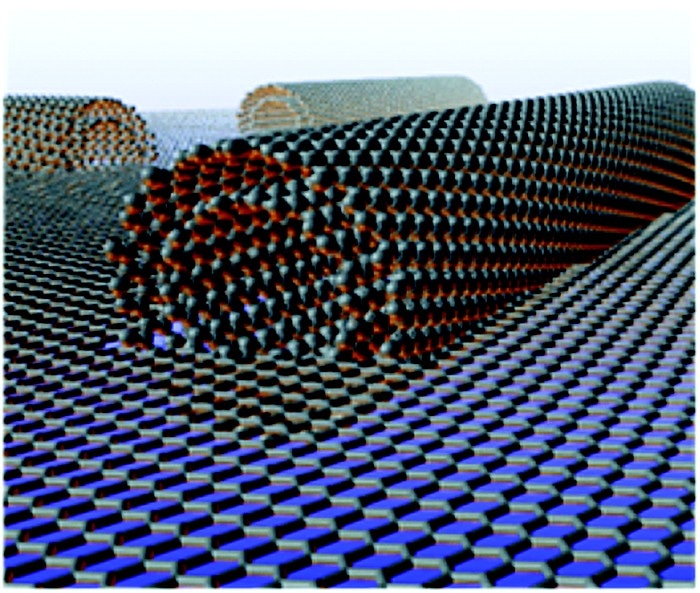
Ultrathin and extremely conductive, graphene exhibits potential for flexible electronics and energy-dense battery electrodes. But materials scientists worry that the material’s brittleness could keep it away from practical applications. New research shows that carbon nanotubes could be the solution to this issue. Sensitive measurement methods and simulations show that coating graphene with carbon nanotubes helps it resist fracture in quite the same way that rebar makes concrete structures more robust.
The separate carbon-carbon bonds in graphene are some of the toughest found in nature. “In a perfect world, it should be very strong,” says Jun Lou, a nanomechanics expert at Rice University. But zoom out, and the material is delicate, fracturing easily at the sites of the most minor defects in its structure. In 2014, Lou published a paper confirming that pure graphene possesses a fracture toughness of just 4 MPa, rendering it more brittle than safety glass, which is designed to break upon impact. This will be an issue in applications like flexible electronics, he says. Tears in the material could short-circuit graphene devices or result in expensive manufacturing glitches. “When you get to the real, commercial realm, reliability becomes an issue,” Lou says.
One way to deal with this is to try to regulate graphene’s crystalline structure to eliminate defects, but this is tough. Rice University nanochemist James M. Tour chose a different approach, enthused by composite building materials, using another carbon nanomaterial that also possesses good electrical properties: carbon nanotubes. He created a graphene-nanotube hybrid he named as rebar graphene by coating a copper surface with carbon nanotubes, using chemical vapor deposition to grow graphene on top, and then peeling the nanotube-studded graphene off. Tour believed the material would be strong just like rebar-containing concrete, and he joined forces with Lou to do the wide-ranging mechanical testing required to prove this idea.
Lou’s team performed repetitive fracture experiments under various types of electron microscopes, using a miniature mechanical device to pull on the rebar graphene at various angles relative to the nanotubes. Experimental techniques alone cannot capture what occurs when graphene fractures—it happens very fast. So the team partnered with Brown University researchers who are experts in molecular simulations. By stitching together images from a number of experiments and mimicking the events, the team was able to obtain a complete picture of what occurs when rebar graphene tears, down to the level of separate nanotubes.
“It’s taken us a couple years to understand what’s going on,” Lou says. “In pristine graphene, the crack is unstoppable, and goes in a straight line.” In rebar graphene, the fracture travels in a zig-zag, with nanotubes keeping the graphene together like bridges, pulling the torn sides back together until the stress is very high and the nanotubes give. Rebar graphene has a fracture toughness of 10.7 MPa, over twice that of pristine graphene. Though reliability in actual devices still needs to be demonstrated, these standard materials properties are good news for those seeking to make strong electronics using carbon nanomaterials. Tour’s earlier work revealed that rebar graphene possessed a lower electrical resistance and better transparency compared to plain graphene.
Lou says other favorable ultrathin, 2D electronic materials, such as molybdenum disulfide, are also fragile and might be toughened using the same technique. Ting Zhu, a mechanical engineer at Georgia Institute of Technology, is fascinated by the methods used in the research, and agrees it will have broader implications. “This paves the way for the development of next-generation rebar graphene as well as other 2D composite materials that are strong and tough, which can be used for flexible electronics and energy storage,” he says.
